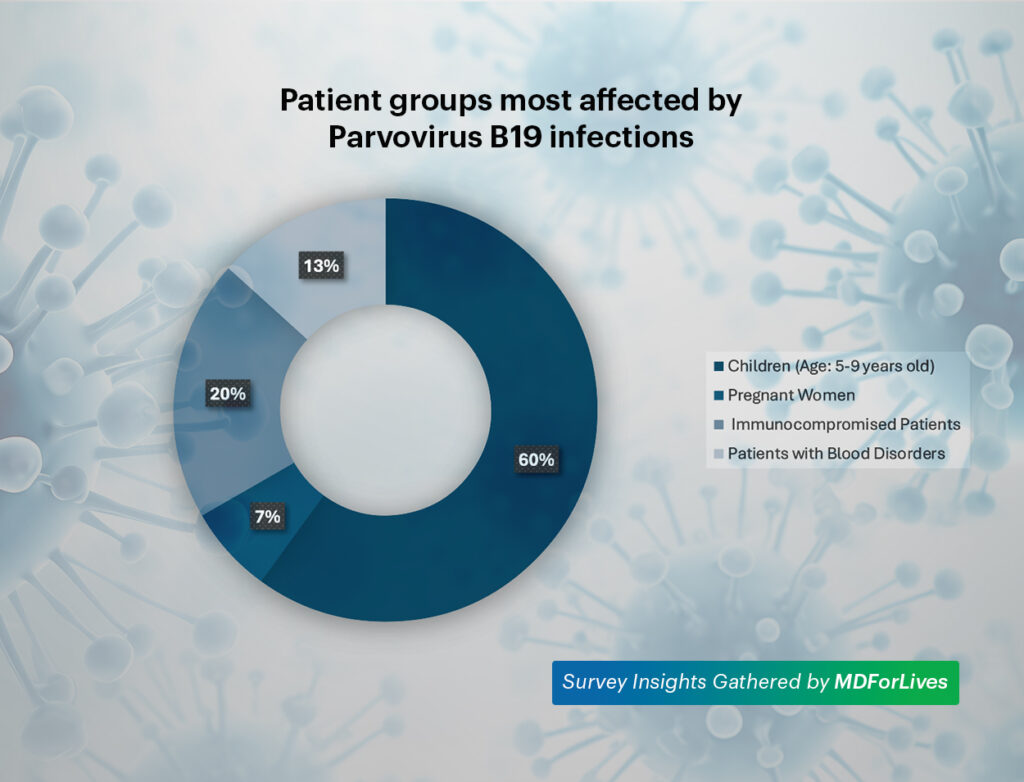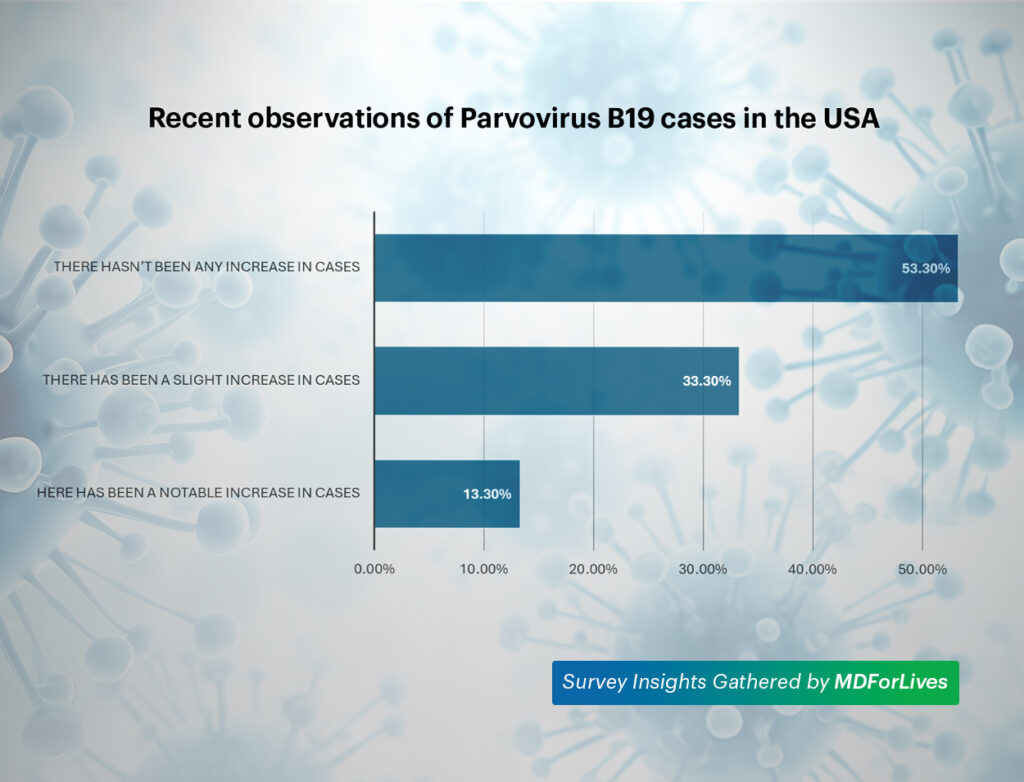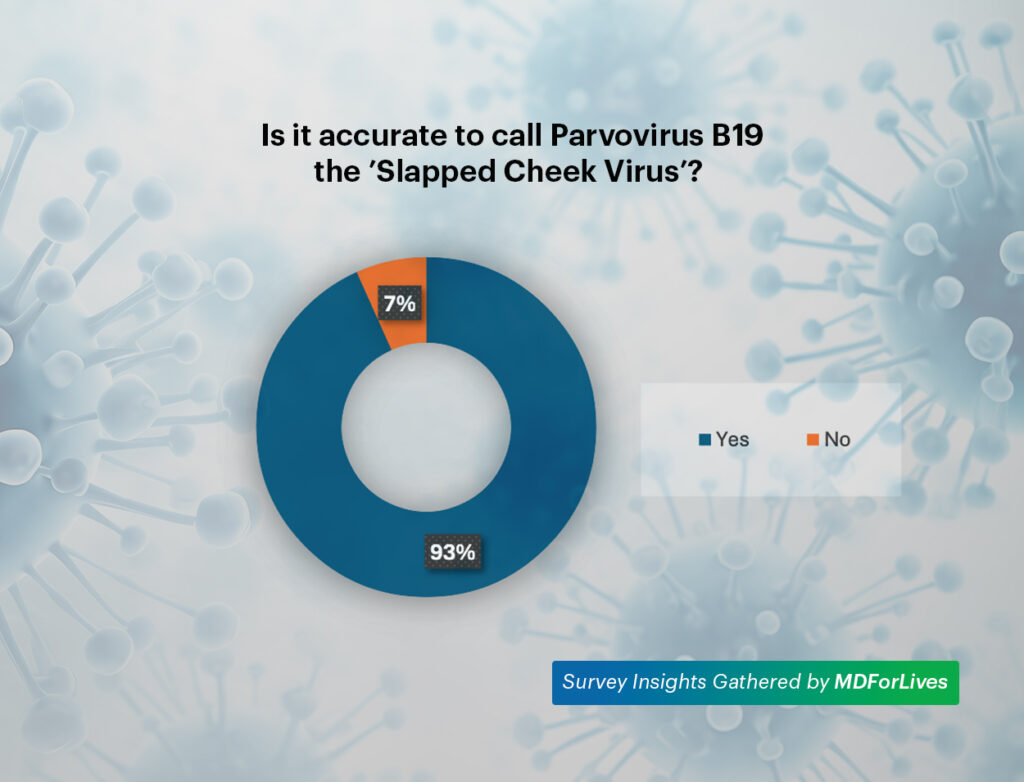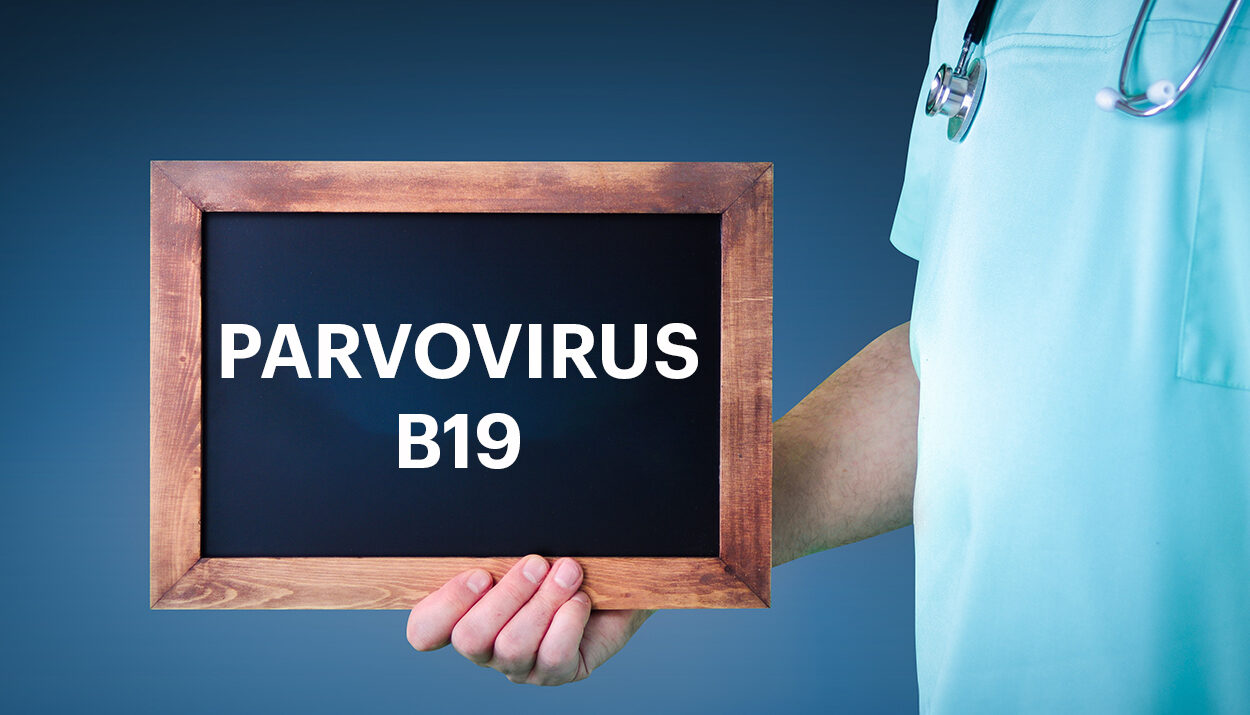Every parent has a certain feeling when they notice something unusual about their child’s health. It starts with a feeling of unease, followed by a few hours of wondering if it’s something that will go away on its own or something that needs immediate attention. A little rash on the cheeks, a little fever and maybe some fatigue – those signs are often brushed off as symptoms of a common cold or an after-effect of the latest virus hovering in the air. But maybe, in some children, that rash would soon lead to an unexpected diagnosis – Parvovirus B19.
It sounds like a benign condition, right? After all, how can a rash on the cheeks seem threatening? But trust us, parvovirus B19 cannot be categorized as – just “another childhood illness.” It can have serious consequences! But unfortunately, this virus hasn’t grabbed the attention it deserves in conversations about infectious diseases in the USA.
It’s easy to forget about a virus that isn’t as talked about as others, but its potential to affect vulnerable populations shouldn’t be underestimated. Therefore, whether you’re a healthcare provider seeing patients, a parent dealing with a rash, or just someone curious about how this virus impacts us, it’s time to take a closer look at some interesting insights gathered by us, MDForLives.
PARVOVIRUS B19: SYMPTOMS, DIAGNOSIS & TREATMENTS
Parvovirus B19, often associated with the “fifth disease,” presents with a variety of symptoms depending on the individual’s age and immune status. Common parvovirus B19 symptoms in children include a mild fever, fatigue, headache, and a characteristic “slapped cheek” rash, which may extend to the arms and legs. Parvovirus B19 adult symptoms can cause joint pain or swelling, often mistaken for arthritis. In immunocompromised individuals or those with pre-existing blood disorders, Parvovirus B19 can lead to severe anemia or other complications.
Parvovirus B19 diagnosis typically involves blood tests to detect antibodies or the virus’s DNA, helping confirm recent or active infection. While there is no specific antiviral treatment, most cases are self-limiting and can resolve on their own with symptomatic care like rest, hydration, and over-the-counter pain relievers.
For high-risk patients, specialized parvovirus B19 treatment, such as immunoglobulin therapy or blood transfusions, may be required to manage severe complications. Early diagnosis and appropriate care are crucial to mitigating the impact of this often overlooked virus.
A CLOSER LOOK AT THE PREVALENCE OF PARVOVIRUS B19 IN THE USA
MDForLives’ recent research with dermatologists uncovered both insightful and concerning findings regarding the prevalence of Parvovirus B19 across various patient groups in the USA.

1. Children (Ages 5-9)
Children, especially those aged 5-9, are at the forefront of Parvovirus B19 infections. A staggering 60% of pediatric cases in this age group show exposure to the virus. This is a vivid reminder of how common this infection is among young children, often presenting as a mild rash or flu-like symptoms.
For dermatologists, this statistic underscores the importance of early parvovirus B19 diagnosis and preventive care in school-aged kids, where close interactions and group settings provide the perfect environment for the virus to spread.
2. Pregnant Women
Although less frequent, the risks associated with Parvovirus B19 in pregnant women are significant. Around 7% of cases occur in this group, with complications like fetal anemia or even miscarriage posing serious concerns.
For expecting mothers, awareness becomes critical, not just for their health but for the health of their unborn child. Regular screenings and close monitoring can go a long way in mitigating these risks.
3. Immunocompromised Patients
For individuals with weakened immune systems, such as those living with HIV or undergoing cancer treatment, this virus presents a significant challenge. About 20% of these patients report infections, underscoring their increased vulnerability.
In the absence of a robust immune response, even a mild virus can lead to severe and long-lasting complications, making proactive management crucial for these at-risk individuals.
4. Patients with Blood Disorders
Those with blood disorders such as sickle cell anemia or thalassemia face unique challenges when exposed to Parvovirus B19. In this group, 13% have encountered the virus. Given its ability to disrupt blood cell production, these patients’ stakes are particularly high.
This highlights the need for specialized care and swift intervention when parvovirus B19 symptoms arise, as the consequences can compound pre-existing health issues.
Why These Insights Matter: By understanding who is at risk and why, dermatologists can ensure better outcomes for those affected while fostering broader awareness of Parvovirus B19 and its implications.
COULD PARVOVIRUS B19 SPARK THE NEXT EPIDEMIC OR PANDEMIC?
The good news is – NO. Parvovirus B19 is not as alarming as its name might suggest. While it spreads relatively easily from person to person, much like the common cold, it does not carry the same level of danger as viruses like COVID-19 or Human Metapneumovirus (HMPV).

Our latest survey offered a clearer picture of the virus’s impact. Most dermatologists haven’t observed a dramatic increase in cases, which is reassuring. In fact, a significant 53.3% of respondents reported no noticeable rise in Parvovirus B19 cases in their practice, typically encountering just 1-2 cases per year. Another 33.3% did note a slight uptick, while only 13.3% mentioned seeing a notable increase.
These figures highlight that while parvovirus B19 is prevalent, its presence remains relatively stable and manageable. It is certainly not an uncontrollable public health threat, nor does it warrant the same level of concern as more severe viruses.
THE “SLAPPED CHEEK VIRUS” CONTROVERSY
Parvovirus B19 is commonly referred to as the “Slapped Cheek Virus” due to its characteristic rash, which can appear as bright red cheeks resembling a slap mark. However, there is an ongoing debate about whether this nickname is entirely accurate, given that similar rashes occur with other viruses like Bocavirus and Coxsackievirus.

In our recent survey, 93% of dermatologists agreed that it is accurate to call Parvovirus B19 the “Slapped Cheek Virus,” as the rash is a hallmark sign of the infection. However, a small percentage (7%) disagreed, pointing out that the resemblance to other viral rashes can lead to confusion and calling it the “Slapped Cheek Virus” might oversimplify the clinical picture.
FINAL TAKEAWAY: FOCUS ON PREPAREDNESS, NOT PANIC!
While Parvovirus B19 may not pose the same threat as other highly contagious or severe illnesses, its impact on specific vulnerable populations – children, pregnant women, immunocompromised individuals, and patients with blood disorders, cannot be overlooked. For healthcare professionals, especially dermatologists, the key lies in early recognition, accurate parvovirus B19 diagnosis, and timely management of cases to mitigate potential complications.
This virus reminds us of the importance of staying informed about seemingly mild illnesses that can have profound implications for at-risk patients. Instead of fear, let’s channel our focus towards heightened awareness, proactive screening, and patient education.
Together, we can ensure better outcomes and control this “hidden in plain sight” virus.
If you have insightful case studies based on Parvovirus B19 or other skin infections, please write to us at collaboration@mdforlives.com. You can also share your valuable knowledge and make a difference by participating in paid medical surveys. Register with MDForLives today!

The creative force behind the keyboard, Pallabi crafts narratives of healthcare wonders and research marvels. As a seasoned professional blogger, she ventures to unearth the riches of medical innovation, weaving them into insightful stories that educate.






